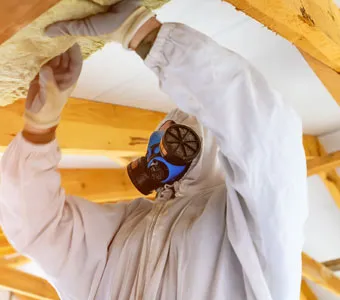How should house flippers and remodelers handle asbestos?
Many people in North Carolina own older homes and decide that the time has come to remodel. Others flip houses, a usually profitable endeavor that involves purchasing a house, remodeling it and putting it back on the market within a short period of time. These older houses may present potential improvement or profit, but they may also contain unique hazards like asbestos if they were built before asbestos bans and regulations were enacted.
Asbestos exposure can lead to serious diseases such as mesothelioma and asbestosis. Therefore, it is imperative to be able to identify whether there is asbestos in the house and to know how to handle asbestos-containing materials prior to remodeling. The United States Environmental Protection Agency provides some helpful guidelines for safely identifying and handling asbestos.
Asbestos cannot be identified by simply looking at it; it will need to be tested. Remodelers should not attempt to take samples themselves but rather leave sampling and analysis to an accredited asbestos professional. Material should only be tested for asbestos if it is damaged or will be disturbed. According to the EPA, asbestos-containing materials that are disturbed will release harmful fibers which can be inhaled whereasbestos-containing materials that are left undisturbed will not release harmful fibers and therefore are not likely to pose a health risk.
Trained and accredited professionals should also be called upon to handle asbestos once identified. They will either repair the asbestos by sealing or covering the asbestos material, or they will remove the asbestos altogether. Although federal law does not require trained and accredited professionals to repair or remove asbestos, some states do, such as North Carolina. North Carolina also follows specific rules regarding the management of asbestos, including the Asbestos Hazard Management Program and the National Emissions Standards for Hazardous Air Pollutants.
The EPA recommends creating a contract with an asbestos professional that includes all applicable federal, state and local regulations to be followed along with a plan for work and cleanup. Once the work is complete, a professional should monitor the air for any asbestos fibers. If all these procedures are adhered to, the risk of contracting an asbestos-related disease from remodeling will be greatly reduced.







